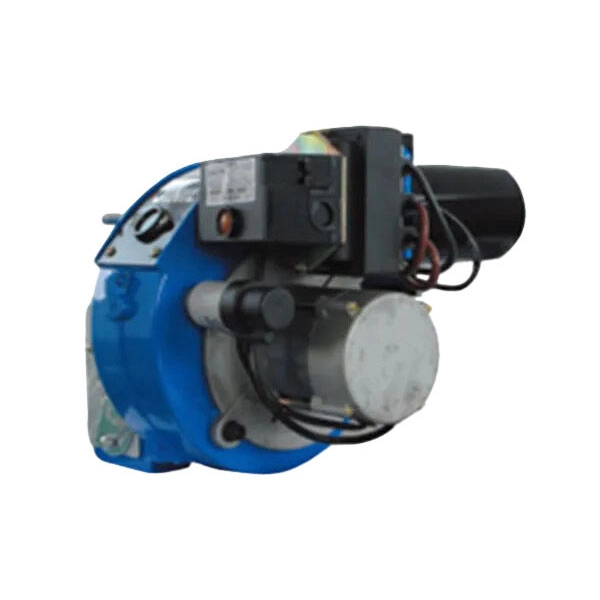
A non-standard gas burner is a burner designed for a specific purpose or fuel that goes beyond the typical, everyday gas burners found on a residential stove. While a kitchen stove burner is designed to burn natural gas or propane for cooking, non-standard burners are engineered for industrial, commercial, or specialized applications that require different types of fuels, higher heat outputs, or unique flame characteristics.
A non-standard gas burner is a customized combustion solution designed to meet specific industrial heating requirements that cannot be achieved with conventional burners. Unlike standard models, non-standard gas burners are engineered according to particular operating conditions such as fuel type, combustion chamber design, temperature demand, air-to-gas ratio, and installation space.
These burners are widely applied in industries such as textile, metallurgy, chemical processing, ceramics, food, and environmental engineering, where unique working conditions require tailor-made heating systems. By offering flexible design, precise control, and high energy efficiency, non-standard gas burners help enterprises improve productivity, reduce fuel costs, and lower emissions.Key advantages of non-standard gas burners include:
Custom design to fit special machinery or process needs
Compatibility with multiple fuel types (natural gas, LPG,mixed gases, etc.)
High efficiency combustion with optimized heat distribution
Stable flame under varying load conditions
Low emissions for compliance with environmental standards
Fuel Versatility: Unlike standard burners that use natural gas or LPG, non-standard burners can be designed to run on a wide range of gases, including:
Low-calorific gases: Gases that are byproducts of industrial processes, such as blast furnace gas, coke gas, or associated petroleum gas. Using these "free" gases can significantly increase a plant's energy efficiency and reduce costs.
Hydrogen: As industries move toward decarbonization, hydrogen burners are becoming more common.
Biomass-derived fuels: Some burners are designed to use high-viscosity liquid fuels like glycerin or fatty acids from biodiesel production.
Multi-fuel burners: These are designed to burn a combination of fuels, offering flexibility and the ability to switch between fuels as needed.
Specialized Applications: Non-standard burners are used in a variety of industrial and commercial settings, including:
Process Heating: Furnaces for melting metals (e.g., aluminum), heat treatment, and drying.
Power Generation: Boilers in power plants to generate steam for electricity.
Petrochemical Industry: Refining, distillation, and cracking processes.
Incineration and Thermal Oxidizers: For disposing of waste gases and materials.
Food Processing: Baking, roasting, and sterilization.
Metalworking: For tasks like heat treatment and metal forming.
Unique Designs and Technology: These burners often incorporate advanced technology to achieve specific goals, such as:
Low-NOx Emissions: Many industrial burners are designed to minimize the production of nitrogen oxides (NOx), a major air pollutant. This is often achieved through techniques like air staging and flue gas recirculation.
Specific Flame Shapes: Burners can be designed to produce a specific flame shape (e.g., round, flat, or linear) to optimize heat distribution for a particular application or furnace design.
Forced Draft: Unlike the natural draft of a residential stove, many industrial burners use a mechanical fan to force air into the combustion chamber, allowing for a more controlled and efficient air-to-fuel ratio.
Recuperative or Regenerative Technology: Some burners are designed to recover heat from exhaust gases to preheat combustion air, dramatically increasing efficiency.
The classification of non-standard burners is often based on their design, purpose, or fuel type. Some common types include:
Premix Burners: Air and gas are mixed in a chamber before being discharged and ignited. These are often used in applications requiring ultra-low NOx emissions.
Inshot Burners: A simple and common type where pressurized fuel enters a burner tube, mixing with air as it flows through.
Power Burners: These use a mechanical fan to mix air and gas, allowing for a highly controlled and efficient flame, often used in large-scale industrial applications.
Infrared Burners: These use a ceramic or metal surface that glows with intense heat when gas is burned. They are known for providing high, radiant heat and are often used in grilling or drying applications.
Multi-flame or Dual-ring Burners: These burners, sometimes found in high-end residential or commercial kitchens, offer a wide range of heat control, from a small simmer flame to a powerful high-heat flame.
Take every customer request seriously.

Shuxin
Electromechanical
+86 15516359168
shuxin@sxburner.com
Room 504, Building 11, Wuzhou International Industrial Expo City, Old National Highway 310, Xigong District, Luoyang City, Henan Province
+86 15516359168
shuxin@sxburner.com
Room 504, Building 11, Wuzhou International Industrial Expo City, Old National Highway 310, Xigong District, Luoyang City, Henan Province